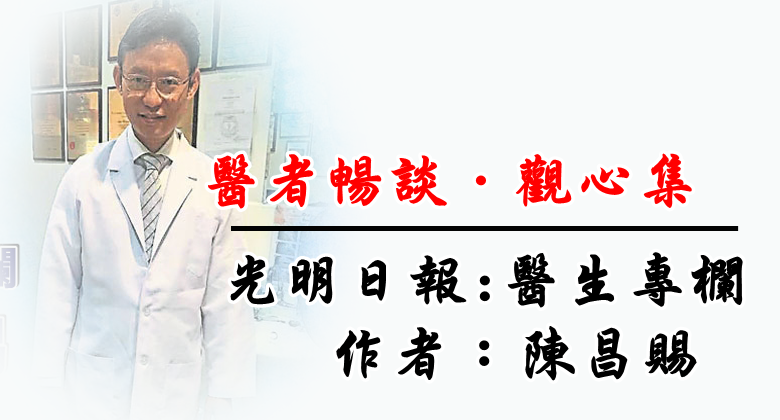Arm paralysis and weakness are not caused by cervical spine or thoracic outlet syndrome

Text: Li Yanxi (physiotherapist), “Ming Pao”
(Hong Kong News) The thoracic outlet refers to the passage from the lower neck to the armpit. If the nerves or blood vessels in it are compressed, paralysis, tingling, weakness, inability to raise the arms, and even soreness and pain in the shoulders and neck will occur.
Most neurological disorders
Thoracic outlet syndrome (TOS) refers to the compression of nerves and blood vessels from the neck to above the first rib, causing symptoms in the upper limbs.
The thoracic outlet is a space bounded anteriorly by the anterior scalene, posteriorly by the middle scalene, and inferiorly by the first rib. It contains important structures, including the brachial plexus and arteries. and veins (see image below).
When this space narrows for some reason, it will compress the inner structures and cause different upper limb symptoms, such as numbness, pain, weakness, etc. According to the compressed structure, thoracic outlet syndrome can be divided into three categories: neurological, arterial and venous.
Neurogenic thoracic outlet syndrome accounts for more than 95% of all cases.
Symptoms are usually pain in the arms and hands due to nerve irritation,
Paresthesia and weakness. Paresthesias involving all fingers,
Usually the ring finger, little finger, and ulnar side of the forearm are most obvious.
In addition to the upper extremities, it can cause pain in the neck, over the trapezius muscles, and in the anterior chest wall.
Arterial and venous thoracic outlet syndrome,
Common symptoms include cold and swollen hands, and getting tired easily when moving the arms.
Compression of the brachial plexus
Thoracic outlet syndrome is most often caused by trauma to the neck. After neck trauma, the scalene muscles become inflamed and swollen, increasing pressure in the interscalene triangle and causing compression of the brachial plexus. After the inflammatory period, scar tissue begins to accumulate and the muscles become tense, again causing compression of the brachial plexus.
Poor posture can also lead to thoracic outlet syndrome, such as rounded shoulders or forward head tilt, which shortens the pectoralis minor muscle. Over time, the pectoralis minor muscle becomes tight, causing the sub-coracoid space to expand. ) increases pressure, causing compression of the brachial plexus.
Exercise relieves:Stretch strong muscles every day to keep joints flexible
Patients with thoracic outlet syndrome should avoid lifting heavy objects and repetitive movements of the upper limbs. Stretch daily to strengthen your muscles and keep your joints flexible. Exercise therapist Milo explains the exercise treatment guidelines for thoracic outlet syndrome.
There are three main problems:
Thoracic outlet syndrome is mainly an upper limb symptom caused by compression of the brachial plexus. Problems mainly occur in three places, namely the scalene muscles, the space between the clavicle and the first rib, and the pectoralis minor. For these three types of There are different suggestions for handling the situation.
1. Relax tense scalene muscles
First, for tight scalene muscles, it is recommended to stretch and relax.
Exercise recommendations (Figure A):
Use range of motion that does not worsen symptoms. Take stretching the left side as an example. After sitting up straight, slowly bend your head to the right, imagining extending your head to the side and upward, and then tilt your head upward slightly until you feel a stretch in the front of your neck. Keep your torso straight during the process. Avoid ribs everting. Do 3 sets for 30 seconds, then switch sides.
In addition, most people’s scalene muscle tension is mainly due to improper breathing methods. It is recommended to maintain abdominal breathing when stretching, use the diaphragm to breathe, and avoid overuse of the scalene muscles for breathing.
2. Strengthen back muscles
Second, for the problem of insufficient space between the clavicle and the first rib, which is often caused by excessive forward tilt of the scapula, it is recommended to strengthen the back muscles and improve the ability of the scapula to tilt backward and upward, thereby increasing the space between the clavicle and the first rib.
Exercise recommendations (Figure B):
It is recommended to perform scapular abduction exercises in a sitting position. Sit up straight, open your arms outward and then retract forward and adducted about 30 degrees. First tilt your scapula slightly backward, and then slowly raise it to strengthen the ability of your scapula to tilt backward and rotate upward. At the beginning, you can raise your arms 90 degrees and hold a light weight. 8 times for 1 group, do 3 groups.On the premise that there is no discomfort, slowly increase the lifting range and weight-bearing, and be careful to avoid excessive shrugging during exercise.

3. Stretch and tense the pectoralis minor muscle
Third, the pectoralis minor muscle is tight, mainly caused by bad posture such as rounded shoulders or forward head posture.
Exercise recommendations (Figure C):
Stretch your chest muscles while standing. Lift one arm against the wall 120 degrees, step forward with the extended foot, and then slowly rotate your body forward and outward until you feel a slight pulling sensation. Be careful to avoid everting your ribs and forward scapulae during extension. 30 seconds for 1 group, do 3 groups
The above exercise suggestions are for reference only. If you have any questions, you should consult your doctor or physical therapist.


![[Love Wants Sexual Happiness Series 358]Find the culprit and overcome psychogenic erectile dysfunction. Don’t let pressure affect your sexual happiness. [Love Wants Sexual Happiness Series 358]Find the culprit and overcome psychogenic erectile dysfunction. Don’t let pressure affect your sexual happiness.](https://webcdn.guangming.com.my/wp-content/uploads/2024/04/171111-780x420.jpg)

![[Wanqingyi Care]My health, my rights, customized medical methods in the last stage of life [Wanqingyi Care]My health, my rights, customized medical methods in the last stage of life](https://webcdn.guangming.com.my/wp-content/uploads/2024/04/ZZ1-100-780x420.jpg)
![[Kidney Transplantation Special Topic]The survival rate of transplanted kidneys is high without dialysis treatment three times a week [Kidney Transplantation Special Topic]The survival rate of transplanted kidneys is high without dialysis treatment three times a week](https://webcdn.guangming.com.my/wp-content/uploads/2024/04/1311-780x420.jpg)



